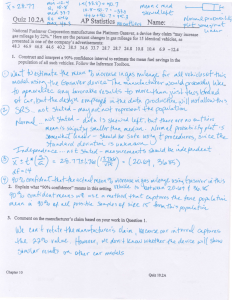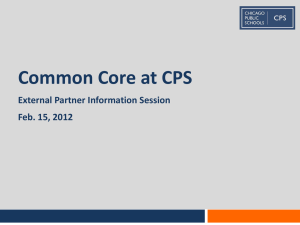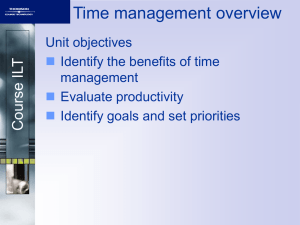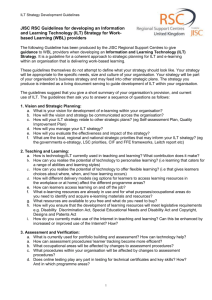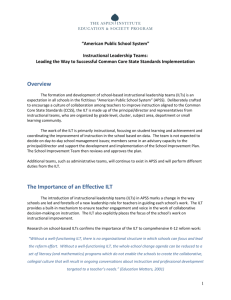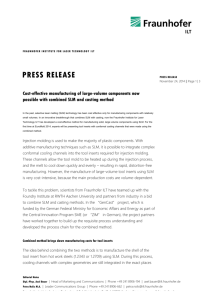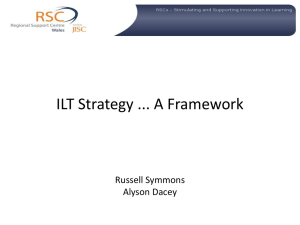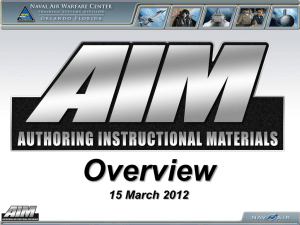ILT Development
advertisement
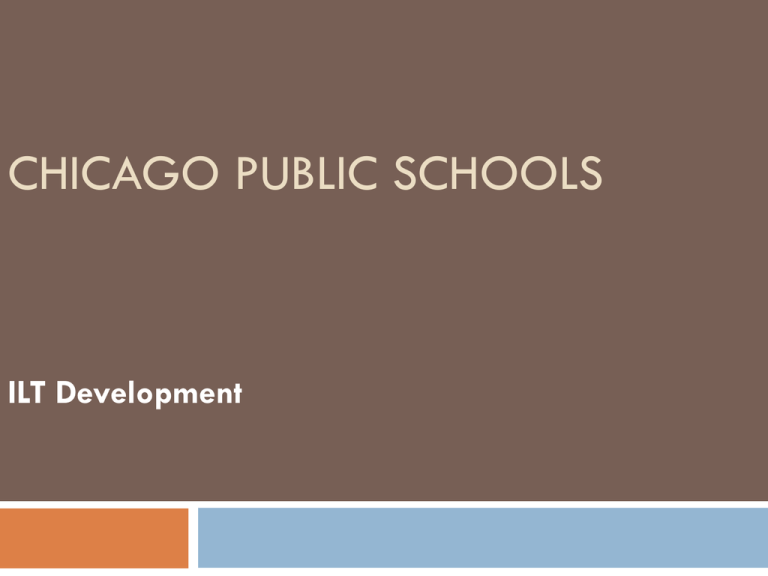
CHICAGO PUBLIC SCHOOLS ILT Development Today’s Outcomes: ILT Development Self-assess the ILT’s effectiveness in performing critical work and functions Determine 1-2 areas for team improvement and the means and measures by which to implement these improvements 2 The Big Picture: How is the Work of the ILT Connected to CPS Initiatives? ILTs systematically use data and the CCSS to set goals, create a Theory of Action and Quarterly Action Plan, and monitor progress to ensure students are achieving measureable results. • Sets school goals • Identifies strategic levers • Describes intended impact on instructional core • Identifies metrics to monitor progress Theory of Action The “How” ILT The “Who” CCSS The “What” • Develops school plan for instructional improvement • Learns through the analysis of data • Supports teacher teams • Facilitates two-way communication • Engages in regular reflection on team itself • Articulates an aligned, district-wide vision for student achievement • Aligns with CPS college- and career-ready outcomes • Is the mechanism for developing high-quality curriculum, instruction, and assessment Video: ILT Conditions for Success As you’re observing a short video of McClellan Elementary School’s ILT, consider: •What effective practices does McClellan appear to have in place? Which of these practices might be helpful for our own ILT to utilize or improve upon? 4 Self-Assessment for ILT Improvement Step 1: Reflect Upon ILT Effectiveness Step 2: Set Goals to Improve ILT Effectiveness Step 1: What is the critical work that the ILT must lead and do that will lead to improved student outcomes? Are the following criteria strengths or weaknesses of our team? How do we know? Critical Work of the ILT: Develops the school’s plan for instructional improvement and monitors progress on the plan Learns through the analysis of data about what is and isn’t working and makes adjustments to school-wide improvement strategies accordingly Supports and builds capacity of teacher teams Facilitates two-way communication between the ILT and engages all staff in participating in decision-making that advances the school’s strategic focus Engages in regular reflection upon its own team processes and effectiveness and takes actions to improve its functioning Step 1: What are the ways in which the ILT functions that supports effectively executing on the critical work? Are the following criteria strengths or weaknesses of our team? How do we know? Conditions for Success for the ILT: Has a clear understanding of the team’s purpose and priorities Meets regularly and frequently (at least twice a month) Assigns clear roles and responsibilities to its members (permanently or on a rotating basis) Knows and follow norms Creates an agenda with clear objectives for each meeting Informs decision making with data and clear evidence Ends meetings with next steps (action items) that have clear owners and due dates Has a systematic way to track action items and consistently monitors both their implementation and success Step 2: Commit to Strategies for Success Based on your team’s identified areas for improvement, use the handout to plan 1-3 strategies our team can commit to in order to achieve our ILT goals How will we monitor execution and effectiveness of these strategies? Reflecting on the Process What did you like about the way this ILT session was conducted? What challenges surfaced? What changes to our meeting process might the team want to make for future meetings? To what extent did this session reflect the strengths and challenges of our ILT that we identified earlier? What steps can we take to improve on or address these areas?

